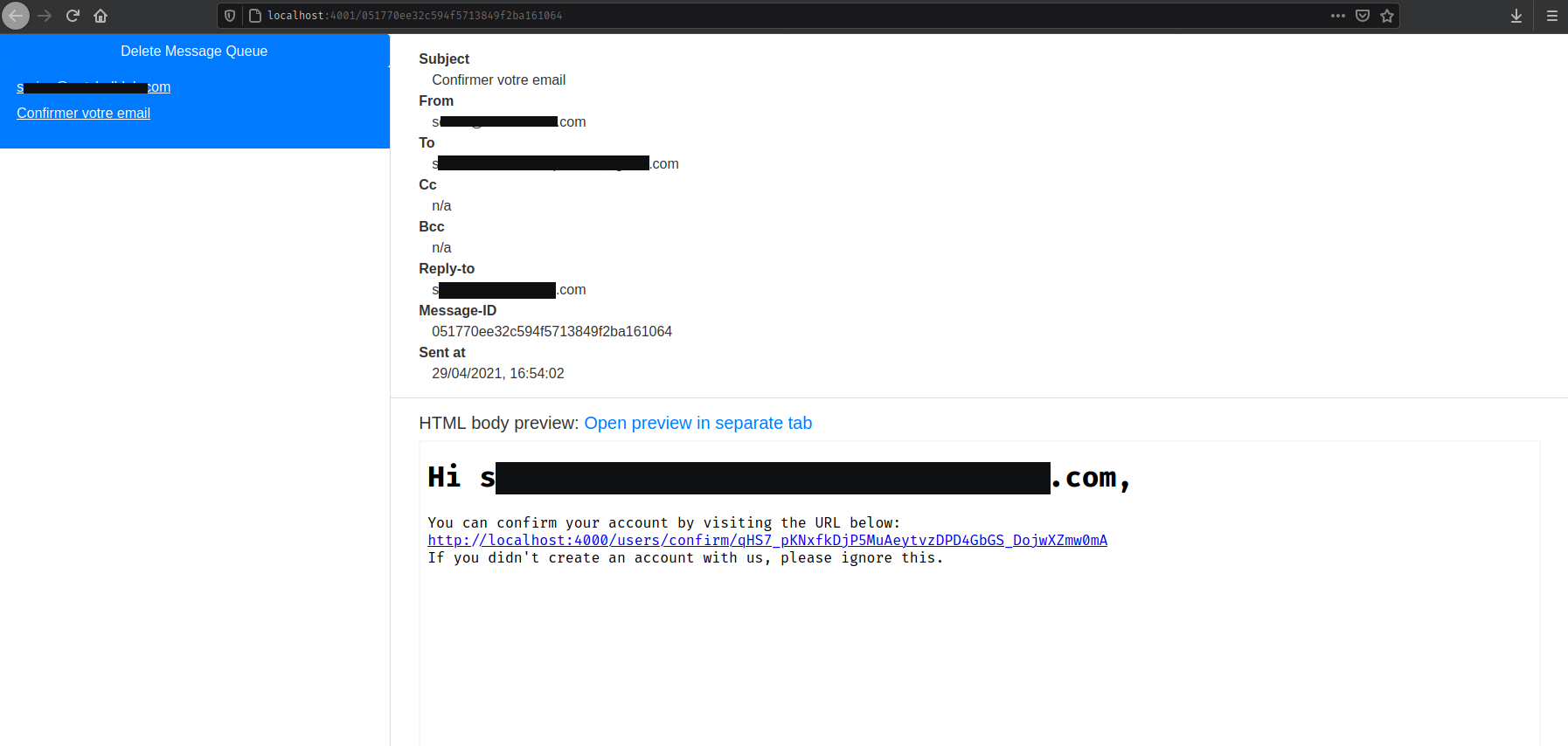- login essentials : signup, signin, reset_password, update_password, update_email
- verified by email : any critical action is verified by email.
- email sending with Swoosh
- email templating with eex (as phoenix templates)
- email preview : instead of really sending them to a recipient, send it to RAM
Swoosh provide a way to send mail to RAM rather than to a mail server. It's useful for developing the mail template without destroying API credits.
To do so, in mix config.exs, you just have to do :
config :password_flow, PasswordFlow.Mailer,
adapter: Swoosh.Adapters.Local
config :swoosh, serve_mailbox: true, preview_port: 4001and in router :
if Mix.env == :dev do
scope "/dev" do
pipe_through [:browser]
forward "/mailbox", Plug.Swoosh.MailboxPreview
end
endAs a final note, using the runtime.exs config file, we would be able to swich to any Adapter without compiling.
I created a layout/email.html.eex file. It's the master email template which would be use to style all the emails.
It's fairly simple, see user_notifier.ex.
new()
|> to(to)
|> from("an-email@yopmail.com")
|> reply_to("an-email@yopmail.com")
|> subject("Réinitialiser votre mot de passe")
|> put_view(PasswordFlowWeb.UserResetPasswordView)
|> render_body("email_reset_instructions.html", %{ user: user, url: url})
|> Mailer.deliver()You can choose if you want the email to be part of the calling process or to be run inside a Task. See PasswordFlow.Mailer in mailer.ex (just using a Task, really).
On a personnal note, I found Swoosh super simple to use and everything was working in minutes. Phoenix.Swoosh (what brings the eex rendering) is ok but what disturbs me is that it makes the lib/ dependant on the web/ (needs views and template) and on Phoenix code. But pragmatically, I guess it's ok since it does not make the lib dependent on having a running phoenix server : it just need the code (proved by sending mail through iex while phoenix server was off).
To start your Phoenix server:
- Install dependencies with
mix deps.get - Create and migrate your database with
mix ecto.setup - Install Node.js dependencies with
yarn installinside theassetsdirectory - Start Phoenix endpoint with
mix phx.serverand add some steroids withiex -S mix phx.serverto repl into it.
Now you can visit localhost:4000 from your browser.
Ready to run in production? Please check our deployment guides.
